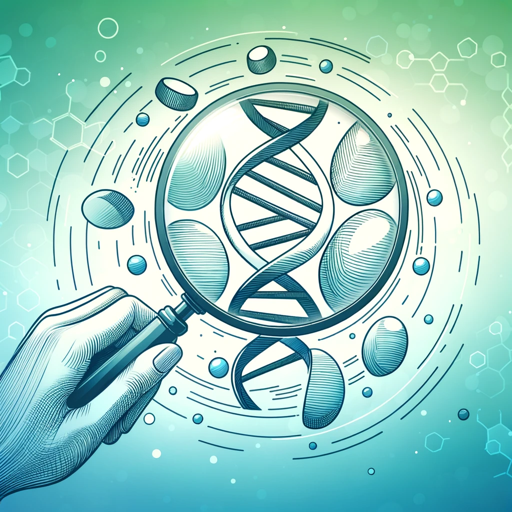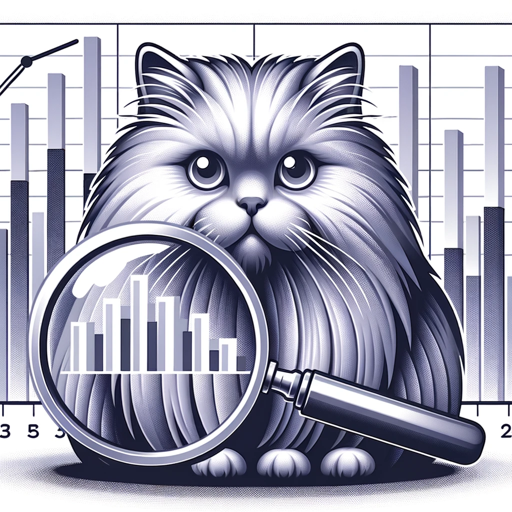ChemGPT-AI-powered chemistry research assistant
Empowering chemical research with AI insights
Explain the molecular structure of...
Describe the reaction between...
What are the properties of...
Suggest research approaches for...
Related Tools
Load More
ChemistryGPT
Your go-to source for all things chemistry

GPT Instruction Genius
[V4] Crafts detailed instructions from your ideas, to create GPTs that provide structured and consistent outputs. Tip: Write '/changelog' to see the latest changes!

BioChem Research GPT
A Specialized Biochemistry and Pharmaceutical Research Assistant

Chemical Engineering GPT
Assists with chemical engineering topics, from basics to advanced.

MedGPT2+
I'm gaslighted by medical students 😎

MetaGPT
Tailored Interactions, Finely Crafted
20.0 / 5 (200 votes)
Introduction to ChemGPT
ChemGPT is a specialized version of the GPT (Generative Pre-trained Transformer) architecture, meticulously designed to support and advance chemical research. Its primary function is to provide detailed and accurate information regarding chemical compounds, reactions, and processes. ChemGPT leverages its extensive training on scientific literature, including peer-reviewed journals, textbooks, and other authoritative sources, to deliver insights that are relevant to both academic and industrial chemistry. It is particularly useful for offering comprehensive explanations of complex chemical phenomena, suggesting research directions, and analyzing molecular structures. For example, a researcher investigating a new catalytic process could use ChemGPT to understand the underlying reaction mechanisms, receive suggestions for potential catalysts, or explore similar reactions in the literature.

Core Functions of ChemGPT
Detailed Chemical Explanations
Example
A researcher needs to understand the electronic structure of a transition metal complex. ChemGPT provides a detailed explanation of the ligand field theory, d-orbital splitting, and how these influence the complex's properties.
Scenario
This function is critical for students or researchers trying to grasp fundamental or advanced chemical concepts, such as the interaction between metal ions and ligands in coordination chemistry.
Support for Research and Development
Example
A chemical engineer is developing a new polymer material. ChemGPT can suggest potential monomers, provide insights into polymerization reactions, and discuss the material properties based on chemical structure.
Scenario
This function is particularly useful in R&D settings where new materials or compounds are being synthesized, as it offers both theoretical background and practical advice on experimental design.
Molecular Structure Analysis
Example
A biochemist working on drug design needs to predict the interaction between a drug molecule and a target protein. ChemGPT can help by discussing the binding affinities, providing examples of similar interactions, and suggesting modifications to improve efficacy.
Scenario
This is valuable in pharmaceutical research where understanding and optimizing molecular interactions is crucial for drug development and efficacy testing.
Ideal Users of ChemGPT
Academic Researchers
Academic researchers in chemistry and related fields, such as biochemistry, materials science, and chemical engineering, are ideal users of ChemGPT. These users benefit from ChemGPT's ability to provide detailed explanations, analyze complex chemical reactions, and suggest new research directions. For instance, a graduate student working on organic synthesis can use ChemGPT to explore potential reaction mechanisms or alternative synthetic routes.
Industry Professionals
Industry professionals in pharmaceuticals, petrochemicals, and materials science also benefit from ChemGPT's advanced analytical capabilities. These users can leverage ChemGPT for tasks such as optimizing reaction conditions, understanding the environmental impact of chemical processes, or predicting the properties of new compounds. For example, a process chemist in the pharmaceutical industry might use ChemGPT to refine a synthesis route for scalability and cost-effectiveness.

How to Use ChemGPT
1
Visit aichatonline.org for a free trial without login; no need for ChatGPT Plus.
2
Identify your specific chemical research needs, such as exploring molecular structures, reaction mechanisms, or chemical properties, to tailor your queries effectively.
3
Input detailed and specific queries related to your research, ensuring you provide enough context or chemical terms to receive a precise and relevant response.
4
Review the information provided by ChemGPT, taking note of any data, explanations, or suggestions for research directions that align with your project goals.
5
Utilize the insights from ChemGPT in your chemical research, academic writing, or experiment planning, and refine your queries as needed for further exploration.
Try other advanced and practical GPTs
Fanfic Dream Weaver
Craft your next fanfiction masterpiece with AI.

Idea Loop
AI-powered ideation for innovative solutions.

中国法律助手
AI-Powered Legal Assistance for All

短视频爆款文案大师
AI-Driven Content for Social Media Success

英语长难句分析
AI-powered English sentence breakdown tool

Coder Copilot GPT
AI-powered coding support for developers.

Relentless Motivation
AI-powered drive for relentless growth.

Conseiller Juridique en Droit du Travail
AI-powered labor law insights

Scientific Writing with LaTeX
AI-enhanced precision for your scientific documents

修仙小说创作写手
Craft Immersive Cultivation Novels with AI

大佬
AI-powered fitness coaching tailored to you.

市场调研分析助手
AI-powered market research insights.

- Problem Solving
- Data Interpretation
- Research Planning
- Chemical Analysis
- Hypothesis Generation
Common Questions About ChemGPT
What type of chemical information can ChemGPT provide?
ChemGPT offers detailed insights on molecular structures, reaction mechanisms, chemical properties, and potential research methodologies. It supports advanced chemical research by providing data and explanations aligned with the latest scientific principles.
Can ChemGPT assist with academic writing in chemistry?
Yes, ChemGPT can support academic writing by offering detailed explanations, generating hypotheses, and suggesting research directions. It helps structure papers with accurate scientific information and supports critical analysis of chemical data.
Is ChemGPT suitable for both students and professionals?
Absolutely. ChemGPT is designed to assist both students who are learning chemistry and professionals engaged in advanced research. It provides tailored responses based on the user's level of expertise and research needs.
Does ChemGPT require specific chemical knowledge to use effectively?
While ChemGPT can be used by anyone, having a basic understanding of chemical concepts enhances the accuracy and relevance of the responses. More detailed and context-rich queries will yield more precise results.
How often is the information in ChemGPT updated?
ChemGPT is based on the latest research and scientific data available up to 2023. It continuously evolves as new information and research findings are integrated into the underlying data sources.